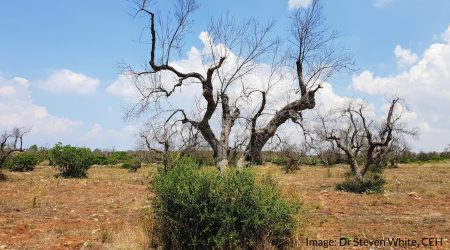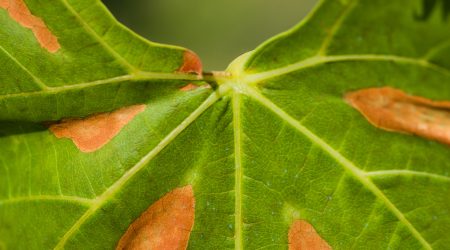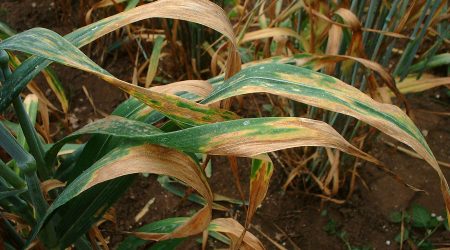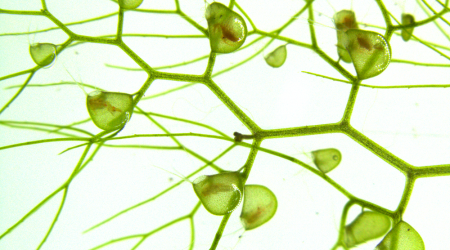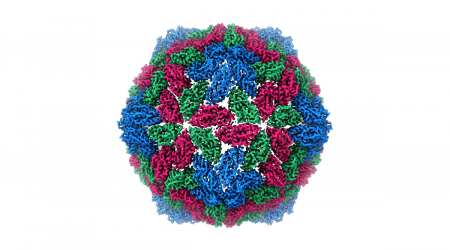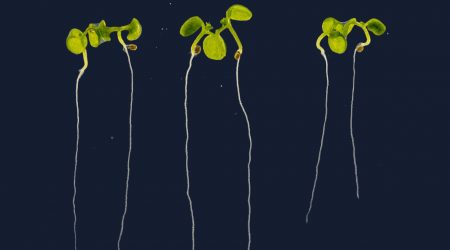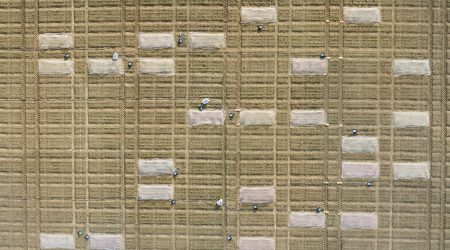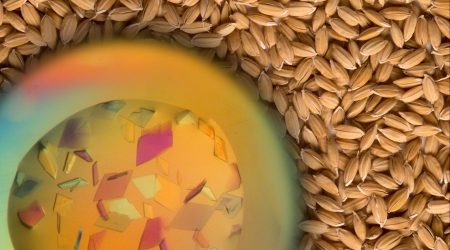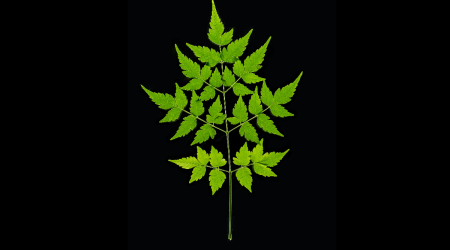A round-up of recent research from the John Innes Centre from winter 2019-20
Nature’s secret recipe for making leaves
The secret recipe nature uses to make diverse leaf shapes has been revealed.
The discovery comes from a study of the carnivorous aquatic plant Utricularia gibba (bladderwort) which has evolved unusual cup-shaped leaves with trapdoors to catch prey. Professor Enrico Coen’s team discovered that simple shifts in gene activity in the leaf bud provide a flexible mechanism for how leaves of all shapes and sizes are made.
“We’ve discovered a general principle by which leaves form needle-like and curved shapes, from flat sheets,” says Professor Coen. “We found that the complex leaf shapes of carnivorous plants evolved from species with flat leaves through simple shifts in gene activity in the leaf bud. What surprised us is that how such a simple mechanism could underlie such a wide diversity of leaf shapes.”
Family of crop viruses revealed in high resolution
We can now take a molecular-level look at Luteoviridae, a pathogenic plant virus responsible for major crop losses around the world.
By using plant expression techniques, Professor George Lomonossoff’s team has generated the quantities of the virus-like particles (VLPs) needed to study the viral structures in high resolution using cryo-electron microscopy.
Professor Lomonossoff says, “This development provides a platform for the development of diagnostic tools for this important family of plant viruses that cause enormous losses worldwide.”
Key role for calcium release in root development
The role of calcium is well understood as a function of signalling between plants and symbiotic fungi that assist nitrogen fixation and phosphate uptake.
Researchers have discovered that calcium plays a key role in primary root development. Using genetics and cell biology approaches, Dr Charpentier’s team reveal that calcium can be released by the nuclei of the root apical meristem – the region of the growing root.
Dr Charpentier says, “Discovering additional role of nuclear calcium release may help us improve plant growth and translate the discovery into agronomically relevant species.”
Revealing a sunnier side to climate change
Pioneering experiments using heated field plots to test the responses of crops to temperature, reveal an unexpected plus side of climate change for farmers.
The trial investigated the link between warmer Octobers in the UK and higher yields of oilseed rape. The crop is particularly sensitive to temperature at certain times of the year with annual yields varying by up to 30% as a result. It is known that warmer temperatures in October are correlated with higher oilseed rape yields, but the reason for this was unclear. The results show that the temperature in October is surprisingly important for the timing of flowering and that warmer temperatures at this time of year result in a delay to flowering the following spring.
“By establishing the link between autumn temperatures and yield, our study highlights an example of climate change being potentially useful to farmers. Cold Octobers have a negative effect on yield if you are growing oilseed rape, and these are now rarer,” says Professor Steven Penfield.
Discovery could pave the way for disease-resistant rice crop development
Researchers have uncovered an unusual protein activity in rice that can be explored to give crops an edge in the evolutionary arms race against rice blast disease, a major threat to rice production around the world.
Magnaporthe oryzae, the fungus that leads to rice blast disease, creates lesions on rice plants that reduce the yield and quality of grain. Professor Mark Banfield’s group with colleagues in Japan, report that a particular rice immune receptor—from a class of receptors that typically recognise only single pathogenic proteins— can perform a dual role by triggering immune reactions in response to two separate fungal proteins.
The genes that encode this receptor could become a template for engineering new receptors that can each detect multiple fungal proteins, and thereby improve disease resistance in rice crops.
The bitter truth of how limonoids are made
Limonoids are a class of plant natural products whose complex chemistry has been intensively investigated for over 50 years.
They are natural chemicals with a wide range of uses, well known for contributing bitterness to citrus fruits. Understanding how plants make these useful chemicals has remained a mystery – until now. Researchers from Professor Anne Osbourn’s group in collaboration with Stanford University have uncovered new genes that encode this high-value chemistry.
The team used genome mining resources to identify three new enzymes which can make the limonoid precursor melianol and therefore represent the initial steps of limonoid biosynthesis.








